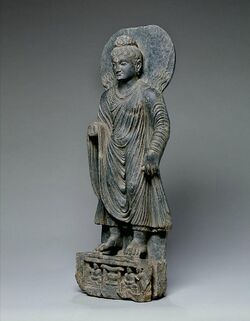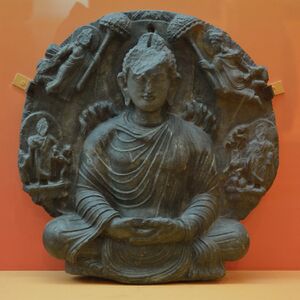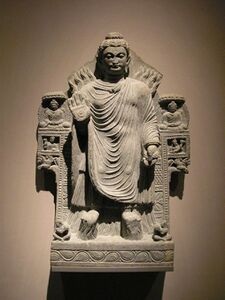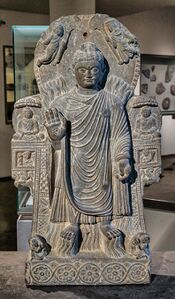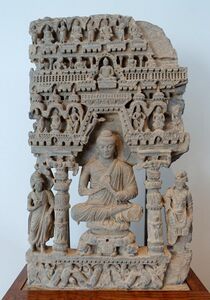Unsolved:The Twin Miracle
The Twin Miracle, also called the Miracle at Sravasti, is one of the miracles of Gautama Buddha. It was performed seven years after his enlightenment, in the location of Sravasti.
The miracle occurred within a contest with heretics, who wished to perform their own miracles.[1] In Sravasti, standing on a jewelled walk, the Buddha proceeded to perform the Yamaka-pātihāriya (Twin Miracle), unattainable to any disciple and so called because it consisted in the appearance of phenomena of opposite character in pairs, e.g. emitting flames from the upper part of his body and a stream of water from the lower, and then alternatively. Flames of fire and streams of water also proceeded alternatively from the right side of his body and from the left.[2]
This miracle is considered as the Buddhist miracle par excellence, and is represented in many sculptural and pictorial scenes.[1]
The miracle just preceded the visit of the Buddha to the Trayastrimsa Heaven, where Maya, his mother, had been reborn and whither he himself ascended to preach the Law to her.
| The Miracle at Sravasti |
References
Further reading
- Brown, Robert L. (1984). The Śrāvastī Miracles in the Art of India and Dvāravatī, Archives of Asian Art 37, 79-95
- Foucher, Alfred (1914). The Great Miracle at Sravasti in the Beginnings of Buddhist Art, Paris: P. Geuthner, pp. 147-284.
